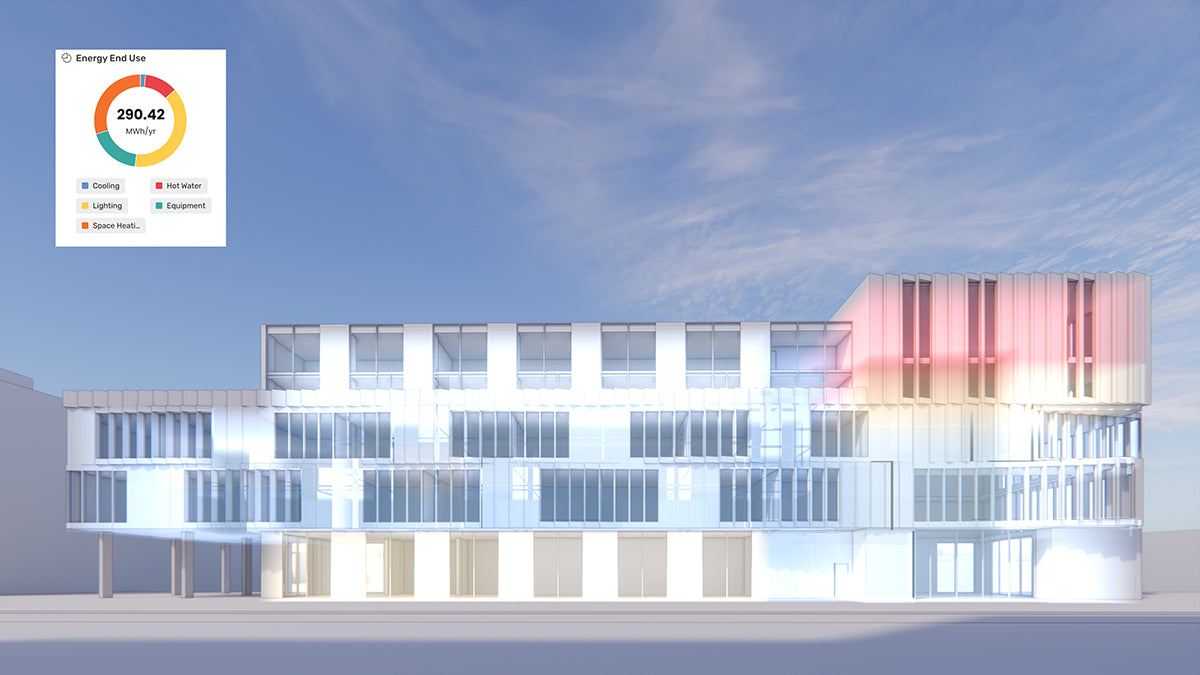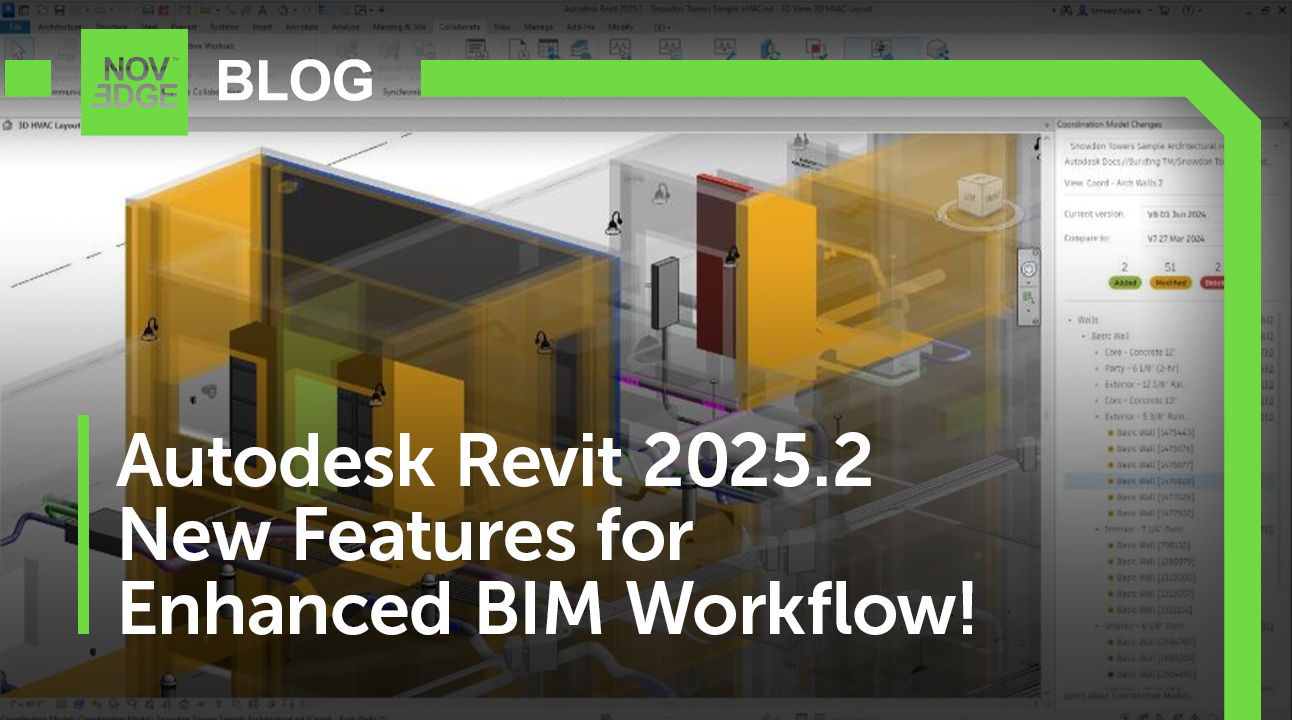Your Cart is Empty
Customer Testimonials
-
"Great customer service. The folks at Novedge were super helpful in navigating a somewhat complicated order including software upgrades and serial numbers in various stages of inactivity. They were friendly and helpful throughout the process.."
Ruben Ruckmark
"Quick & very helpful. We have been using Novedge for years and are very happy with their quick service when we need to make a purchase and excellent support resolving any issues."
Will Woodson
"Scott is the best. He reminds me about subscriptions dates, guides me in the correct direction for updates. He always responds promptly to me. He is literally the reason I continue to work with Novedge and will do so in the future."
Edward Mchugh
"Calvin Lok is “the man”. After my purchase of Sketchup 2021, he called me and provided step-by-step instructions to ease me through difficulties I was having with the setup of my new software."
Mike Borzage
An Interview with Ron Fritz, Managing Partner of Tech Soft 3D (HOOPS3D)
March 22, 2007 6 min read

Ron Fritz is Co-Founder and Managing Partner of Tech Soft 3D, the company that makes the famous HOOPS3D, a graphics toolkit used by several design applications. The impressive list of TechSoft3D customers includes Alibre, Autodesk, Bentley, Fluent, IronCAD, MSC.Software, PTC, SolidWorks, and TransMagic.
After a long phase of apparent immobility, the announcement of some new products such as Acrobat 3D 8, AfterCAD, and SpaceClaim has kindled a spark of excitement in the world of design software. It's the right moment to look at new trends in the evolution of design tools. Ron Fritz is the person with the background and experience to help us in this. I invited Ron to participate in the following interview:
Ron, can you tell us a bit about yourself and your company?
In 1996 four of us formed Tech Soft to spin the HOOPS out from Autodesk and provide it as a core graphics component technology to engineering software firms. Since then the company has consistently grown our revenue and profits, significantly advanced the HOOPS technology and added several complementary components.
I think we have three real strengths. The first is our outstanding R&D team. As a component provider we need to be R&D centric, and 18 of our 24 team members are part of the software group. I also think we have a world-class sales/support channel for component technology that is continuing to grow. The third strength is what we think is an impressive list of satisfied ISV's. We're always particularly proud of the many successful applications on the market that are relying on our team and technology.
What are the benefits, from the end-user point of view, in using a software system powered by HOOPS 3D?
To be frank I doubt that customers care that's HOOPS under the hood. End users rarely, if ever, care about how the software company delivers a quality product at a good price, just care that they DO!
With that said, I'd say that an end user sees 3 benefits when working with a HOOPS-based application.
First, end users benefit in terms of performance and functionality – We're of course a bit biased, but we think that an application built with HOOPS will deliver higher performance and more advanced graphics functionality than most all applications using an internally developed graphics engine.
Second is hardware flexibility & stability – To explain briefly, HOOPS supports both OpenGL and Direct3D, and we thoroughly test on some 80+ video cards. The result for an end user is that they can simply select the best graphics approach for their particular PC and HOOPS will drive that particular card optimally and in a stable manner.
Third is that the use of HOOPS, or any component really, helps keep R&D costs down, which helps to keep the cost of software down.
Again, I don't think customers notice HOOPS per se, but if we're doing our job right these are 3 of the benefits they ultimately see.
TS3D HOOPS is fully compatible with the new Microsoft VISTA. Do you consider VISTA a good platform for design software?
the OpenGL drivers on Vista-ready graphics cards are still quite immature
I think some of the early reports about CAD software problems on Vista are really a result of the natural lag in technology compatibility and not an accurate view of the Vista platform[see more on this topic on Ralph Grabowski, Shaan Hurley, Evan Yares, and Greg Milliken blogs]. We can really only speak to the graphics portion of that question, rather than memory usage, system resource allocation, etc. but our opinion is that the performance issues being reported are almost entirely related to the fact that the vast majority of design applications use OpenGL for graphics acceleration.
Today, the OpenGL drivers on Vista-ready graphics cards are still quite immature. While OpenGL will be well served on Vista as these issues settle out, it also appears clear that Direct3D is the future for Vista and beyond. Our early tests are indicating that using Direct3D that is 100% shader-based will provide significant performance benefits… so we will see design software migrating to driving Direct3D over time – while still wanting to support OpenGL for their customers using Windows XP.
As developers migrate to being able to drive Direct3D in a shader-based mode they will be more than happy with the graphics capabilities of Vista.
Innovation in the CAD world seems to happen at a very slow pace. In your opinion, what holds up the process?
companies that are best at innovating are the ones that put more power in the hands of developers
From our perspective, we see two main factors that slow the pace of innovation.
The first is legacy data. Design systems in particular need to be compatible with data from older system, so changes that impact the data model must be carefully considered. Iterative changes are easily accomplished, but major breaks are quite hard to pull off without major pain to end users.
The second is management being overly cautious. We find that the companies that are best at innovating are the ones that put more power in the hands of their developers. In general, companies that are led by people who either have a technology background or who have strong respect the role technology and technologists play in their company.
Thankfully, I think this second point is improving pretty dramatically. I like what we're seeing with this trend toward "labs" where companies can try new things, get them in the hands of end users and see where it leads. This reduces the risk, overhead and infrastructure associated with launching a new product initiative and allows for much faster iteration and idea flow.
As supplier for virtually all CAD companies, you are in a privileged vantage point to spot new trends in design software. What will the future of design software look like?
We are seeing a few things. The first is ease-of-use. Everyone recognizes that the old design paradigm is too difficult so this is no great insight. Not only are there new firms that offer this as their primary benefit, but the more established design software vendors are investing heavily in making things easier to use.
Because we're mainly entrenched with companies' graphics development that is something we can readily comment on. There is a clear move among the bigger players to differentiate their software through the visual quality of their applications. It's pretty remarkable how realistic a model and scene can now look,even in real time, using shaders and the new generation of hardware. The large companies have invested pretty aggressively in this area and as that visually rich display becomes the "industry standard" in engineering, the smaller vendors will no doubt need to follow suit to meet end user expectations.
Tech Soft 3D provides a powerful File Formats SDK. More and more software companies are embedding data translators into their products. Are file formats becoming irrelevant?
I think it's fair to say that because of the proliferation of robust translation software, end users don't face the same brick walls of incompatibility that they once did. Either embedded in their application or purchasable as add-ons, users can get around this issue. However, these add-ons can often be pretty expensive, and everyone recognizes that no translation approach converts 100% of the needed data 100% of the time. It's still a vital concern for end users, and though it's easier now than it once was, the issue of file formats is still far from irrelevant[see more on this topic on Alex Neihaus blog].
TS3D offers a very impressive array of core components for design software developers. In what directions are you considering expanding your components product line?
Right now we're pretty happy with the product line we have, so have no specific plans to expand our suite of components. The history of HOOPS is as a powerful graphics subsystem, but we have always said that our mission is to help engineering software firms get better products to market faster and cheaper. As a result, if there is an area of technology that would help software developers achieve that goal then we endeavor to have an offering that will help. At the same time, the quality of our support and consulting is very important to our customers and to us. That requires that we have Consulting Engineers who can properly assist our customers in the use of our components. As a result of that, we want to proceed slowly with adding new products to ensure that we can indeed provide the kind of support and consulting our customers have come to expect. ISV's can look for more solutions from TS3D in the future, but we have nothing on the immediate horizon.
I would like to thank Ron Fritz for taking the time to speak with me today. If you have any questions for Ron or for Novedge, please leave a comment below, and we will be glad to answer.
Franco Folini
Also in NOVEDGE Blog

How the AEC Industry Shifted Towards Essential Sustainable Building Design
August 15, 2024 4 min read
Explore sustainable building design strategies at NOVEDGE, focusing on eco-friendly practices for resilient and efficient structures.
Read More
Unlocking New Realms of Design with Enscape 4.1: Introducing Impact Add-on and Lot More
August 02, 2024 2 min read
Discover Enscape 4.1's new features, including Enscape Impact and artistic visual modes, to elevate design efficiency at NOVEDGE.
Read More
Explore Autodesk Revit 2025.2: New Features and Enhancements for Enhanced BIM Workflows
July 30, 2024 3 min read
Read MoreSubscribe
Sign up to get the latest on sales, new releases and more …


